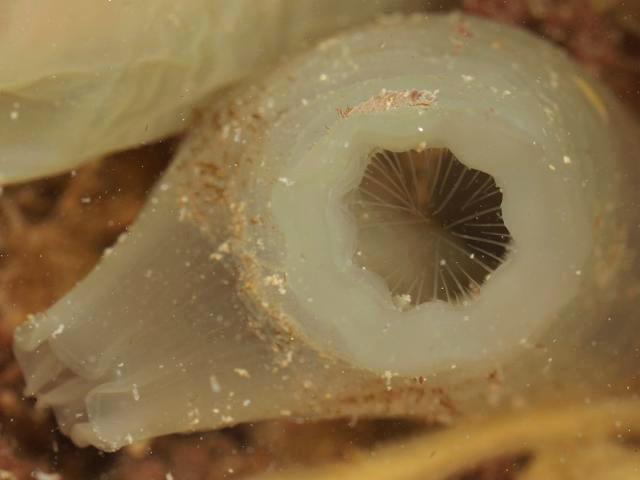
APHOTOMARINE
An educational resource dedicated mainly to the photography
and diversity of marine life that can be found in coastal waters
and intertidal areas of Great Britain and Ireland by David Fenwick.

Ciona robusta Hoshino & Tokioka, 1967 - was Ciona 'Type A' - A sea squirt - a non-native species (Tunicates)
Scroll down and rollover titles to change screen image or click on title to view image.
Non-native sea squirt
Ciona robusta
- dorsal view / siphons 1
Ciona robusta
- dorsal view / siphons 1
Non-native sea squirt
Ciona robusta
- lateral view / siphons 1
Non-native sea squirt
Ciona robusta
- lateral view / in sample 1
Non-native sea squirt
Ciona robusta
- in fouling sample, native Ciona intestinalis in background 1
Non-native sea squirt
Ciona robusta
- in fouling sample, native Ciona intestinalis to the right 1
Non-native sea squirt
Ciona robusta
- in fouling sample, native Ciona intestinalis to the left 1
Specimen found in a sample of fouling taken from a pontoon at Newlyn Marina, Newlyn, Cornwall. 07.06.15.
Non-native sea squirt
Ciona robusta
- lateral view 1
Non-native sea squirt
Ciona robusta
- siphons / not relaxed or open 1
Non-native sea squirt
Ciona robusta
- open oral siphon 1
Non-native sea squirt
Ciona robusta
- open oral siphon 2
Non-native sea squirt
Ciona robusta
- closed oral siphon 1
Non-native sea squirt
Ciona robusta
- atrial siphon 1
Non-native sea squirt
Ciona robusta
- oral and atrial siphons 1
Non-native sea squirt
Ciona robusta
- oral siphons type A and B
Non-native sea squirt
Ciona robusta
- tip of genital duct 1
Species found on the side of a pontoon at Newlyn Marina, Newlyn, Cornwall. 07.11.14. Species occured in small numbers, the native Ciona intestinalis (Type B) was abundant at Newlyn Marina.
The species is thought to have come from the Pacific. In the UK it is found from Torbay in Devon to Newlyn in Cornwall.

The main objective of this website is in furthering environmental awareness and education through the medium of photography. To increase awareness and access to the wildlife of the region and help
people find and identify it. Sometimes the difference between species is obvious but many species can only be determined by observing microscopic characteristics that are specific to any one species.